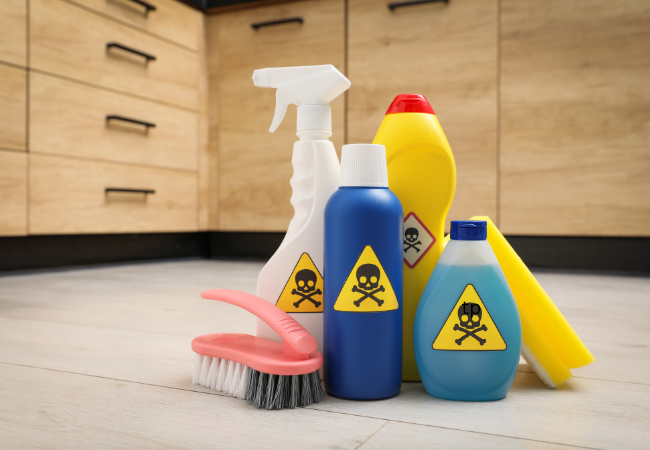https://me-encantas.com/2020/02/12/moho-en-los-alimentos-es-toxico/

https://me-encantas.com/2020/02/12/moho-en-los-alimentos-es-toxico/, mold emerges as both a reminder of imperfection and a testament to resilience. While often associated with disgust and spoilage, mold in food serves as a poignant metaphor for life’s complexities and the beauty found within its flaws.
What is https://me-encantas.com/2020/02/12/moho-en-los-alimentos-es-toxico/?
Mold, a type of fungus, thrives in moist environments, spreading its delicate filaments to colonize surfaces with remarkable ease. Its presence is ubiquitous, gracing our surroundings with an ethereal presence that belies its potential danger.
Toxicity of Mold
Beyond its ethereal appearance lies a hidden peril. Mold possesses the ability to produce toxins known to cause illness when ingested. These toxins, though invisible to the naked eye, wield a potent threat to human health.
Effects on Health
Consuming mold-contaminated food can lead to a myriad of health issues, ranging from mild allergic reactions to severe respiratory problems. Symptoms may include nausea, vomiting, and respiratory distress, underscoring the importance of vigilance in food safety.
Common Sources of Mold in Food
No food is immune to mold’s encroachment. From bread to cheese, fruits to grains, mold finds refuge in a multitude of culinary delights, drawn to their moisture and nutrients like a silent specter of decay.
Prevention and Control
Yet, amidst the specter of mold lurks the promise of prevention. Simple measures, such as proper storage and vigilant inspection, can safeguard against mold contamination, ensuring the preservation of both flavor and health.
Signs of Mold in Food
Vigilance is key in the battle against mold. Visual cues, such as fuzzy growths and discolored patches, offer warning signs of contamination, while the musty odor of decay serves as a poignant reminder to tread with caution.https://me-encantas.com/2020/02/12/moho-en-los-alimentos-es-toxico/
Safe Practices
When faced with moldy food, discretion becomes paramount. While some molds may be harmless, others pose a grave risk to health. When in doubt, it is better to discard than to risk the consequences of consumption.
Cultural and Emotional Significance
Culturally, mold evokes a range of emotions, from revulsion to resignation. Yet, amidst the stigma lies a deeper truth: mold, like life itself, is fraught with imperfections, each blemish a testament to the ebb and flow of existence.
Nature’s Reminder
In the delicate dance of decay, mold serves as a poignant reminder of life’s impermanence. Like the fleeting beauty of a wilting flower or the crumbling facade of ancient ruins, mold whispers of the ephemeral nature of existence.
Overcoming Fear
Yet, in embracing mold, we confront our deepest fears and emerge stronger for the experience. For within the decay lies the promise of renewal, a testament to the resilience of life in the face of adversity.
Celebrating Imperfections
In celebrating imperfection, we acknowledge the inherent beauty found within life’s flaws. Like the intricate patterns of a spider’s web or the weathered patina of aged bronze, mold reminds us that perfection is but an illusion, while imperfection is the true essence of beauty.
The Beauty in Decay
Indeed, in the decay of mold lies a peculiar beauty, a testament to the cyclical nature of existence. From death springs forth new life, each moldy morsel a harbinger of transformation and renewal.
Resilience and Growth
Just as mold perseveres in the face of adversity, so too does the human spirit. In overcoming life’s challenges, we discover the strength within ourselves to flourish amidst the decay, to find beauty in the most unlikely of places.
Conclusion
https://me-encantas.com/2020/02/12/moho-en-los-alimentos-es-toxico/, mold emerges not as a harbinger of ruin, but as a testament to the resilience of life itself. By embracing imperfection, we unlock the hidden beauty found within life’s flaws, celebrating the cyclical nature of existence in all its intricate glory.
Unique FAQs
- Q: https://me-encantas.com/2020/02/12/moho-en-los-alimentos-es-toxico/ ?
- A: Not all molds are harmful, but some produce toxins that can pose a health risk if ingested.
- Q: Can cooking destroy mold toxins in food?
- A: Cooking may destroy some mold toxins, but it does not eliminate the potential health risks associated with mold-contaminated food.
- Q: How can I prevent mold growth in my home?
- A: Proper ventilation, moisture control, and regular cleaning can help prevent mold growth in your home.
- Q: What should I do if I accidentally ingest moldy food?
- A: If you experience symptoms of mold toxicity after consuming moldy food, seek medical attention immediately.
- Q: Is it safe to cut moldy parts off food and consume the rest?
- A: It is not recommended to consume food that has visible mold, as the toxins produced by mold can spread beyond what is visible to the naked eye.



